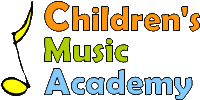
Children's Music Academy

Setup guide for Online Music Lessons
Online music lessons are taught using a two way video call between the student and teacher. The video call can be done using services like Skype or Zoom that allow video calls between most devices and Facetime that allows video calls between Apple devices only. To make the video call requires the following basics
1. Internet connection
A broad band internet connection is best, with most video calls using about 1 Mb/sec (one megabit per second) of the internet connections bandwidth. Any internet connection that can maintain a download and upload speed of a few megabits per second us usually suitable for video calls. For a 30 minute video call the amount of data used is about 250 Mega bytes or 0.25 Giga bytes.
Most problems with video calls are caused by using a WIFI to connect to the broadband internet connection. To avoid issues simply make the video call as close as possible to the WIFI receiver or router used by your internet connection.
A second option is to use a mobile phones internet connection, keeping in mind any data limits associated with your mobile phone plan.
2. Suitable Device
A device can be a computer/Laptop/notebook, a Tablet or a Mobile Phone. The device needs to have an inbuilt front facing camera with microphone or have an attached webcam with microphone, and be able to connect to the internet. During a lesson the device screen and camera need to be looking directly at the student and musical instrument.
Examples of typical devices that are suitable
Laptop Computer - Most laptops today have a built in camera and microphone that is ideal for online music lessons. Examples include Apple Macbook Air or Macbook Pro, and most Windows based laptops made by companies like Dell, Lenovo, Microsoft and HP.
All in One Desktop Computers - Most all in one desktop computers have a inbuilt camera and microphone that is suitable for online music lessons. Examples include an Apple iMac or iMac Pro.
Desktop Computer - A desktop computer would require the addition of a webcam that is a camera and microphone combined. The webcam plugs into the computer using a USB port on the computer.
Tablets - All tables have a built in, front facing camera and microphone, that is suitable for online music lessons. Examples include a Android Tablet, Apple iPad or a Windows based table like a Surface Go or Surface Pro.
Mobile Phone - All mobile phones have a built in, front facing camera and microphone, that is suitable for online music lessons. Examples include Apple iPhone (all models) and Android Mobile Phones from companies like Samsung and Google.
3. Video Call Service
The three video call services we use are Zoom, Facetime and Skype. Each service is free to use and allows the teacher and student to connect using a video call to run the lessons. The basic steps to do this are
- Locate the software or App for your device and install.
- Create a free account with the video service. Usually requires a name and email address to setup.
- Learn how to use the service to make and receive calls.
Note that in our experience Zoom is the best and easiest service to use for online music lessons.
Zoom
Zoom is different to Skype and Facetime as the focus is on video conferencing with text messaging. The basic version of Zoom allows free video calls between two people.
The free Zoom App can be found in the iPhone / iPad App Store or in the Google Play Store for android devices. For Microsoft Windows computer and for Apple Macintosh computers go to the Zoom website page (Getting Started on Windows and Mac) and click on the link titled "Zoom desktop client (Windows or Mac)" which will download the appropriate version for your computer. Alternatively go to the Zoom download page (Goto Zoom Downloads) and then download the Desktop Client for Meetings and install it.
Next you need to run Zoom and login. If you need to create an account select "Sign In" and then select "Sign up for free". Follow the on screen instructions and an enter your name and email address, accept conditions and click ok. An email is then sent to your email address, open the email and follow the instruction to enter a password for your Zoom account.
The email address you used to sign up becomes your Zoom id when making video calls. in the Zoom App enter the email address of the person you wan to contact into the search box. If the search verifies the person has a Zoom account then you can add them you your contacts. To make a video call you start a meeting and ask the person you want to call to join the meeting.
FaceTime
All Apple devices (Macintosh Computers / Laptops, iPads and iPhones) have the built in ability to make video calls between devices, like between an iPhone and iPad or between an iPad and a Macintosh. On Apple devices the Facetime App is used to make the video calls.
If you know a persons apple id, usually an email address or phone number, then you simply type in their Apple-id into the FaceTime Apps search box (Use + to add new FaceTime person on iPhone and iPads). The App will then verify the Apple-id and make the Audio and Video call buttons active by changing their colour to green. Simply press the green video button to make the call.
Video calls can also be started using the Contact Apps as any contact details like a phone number or email that are associated with an Apple-id will display the option to make a FaceTime call.
Apple provides a number support document to help people use FaceTime
Skype
Skype allows three types of communication, video calls, voice calls and text messaging.
The free Skype App can be found in the iPhone / iPad App Store or in the Google Play Store for android devices. For computers using Windows 10 the Skype App comes pre-installed and can also be found and installed from the Microsoft store. For older Microsoft Windows computer and for Apple Macintosh computers go to the Skype website (www.Skype.com) to download the appropriate version of Skype for your computer.
Next you need to run Skype and login.
- Login to your existing Skype account.
You might already have a Skype account as anyone who uses Microsoft Windows and has a Microsoft account can use their Microsoft account details to login. - Create a Skype Account.
Launch Skype and select Create new account or go directly to the Create account page. Then follow the instruction that will take you through the process of creating a new account.
4. Basic Setup for Lessons
Please consider the following when setting up for a lessons;
- Firstly, If your device connects to your home broadband internet using Wifi then please try an locate the lesson as near as possible to the Wifi receiver to minimise problems due to signal strength.
- Secondly, during a lesson minimise heavy use of the internet by other users in the house hold to avoid problems.
Singing
For singing place your device on a table opposite the student so the students head and shoulders can be seen on the device screen.
Guitar
For guitar place your device on a table or chair opposite the student so the students guitar, head and shoulders can be seen on the device screen.
Piano / Keyboard
For piano / keyboard place your device to the left or right of the student so the students hands can be seen on the device screen when playing the piano / keyboard. The student needs to also see the screen to see what the teacher is doing

We offer music lessons for children learning piano, guitar and singing in the hills district of Sydney at our two teaching venues in Glenwood and Baulkham Hills. Our music teachers are highly skilled music educators that specialise in teaching children how to learn an instrument. We are conveniently located for families living in Baulkham Hills, Glenwood, Castle Hill, Winston Hills, Rouse Hill, The Ponds, Kellyville, Beaumont Hills, Bella Vista, Blacktown, Carlingford and North West Sydney.
Main Website: www.ChildrensMusicAcademy.biz Phone: 0418 127 017 e-mail: info@ChildrensMusicAcademy.biz Last update: June 2022
© 2008-2022 Children's Music Academy Copyright Notice, Privacy Statement and Disclaimer statement.